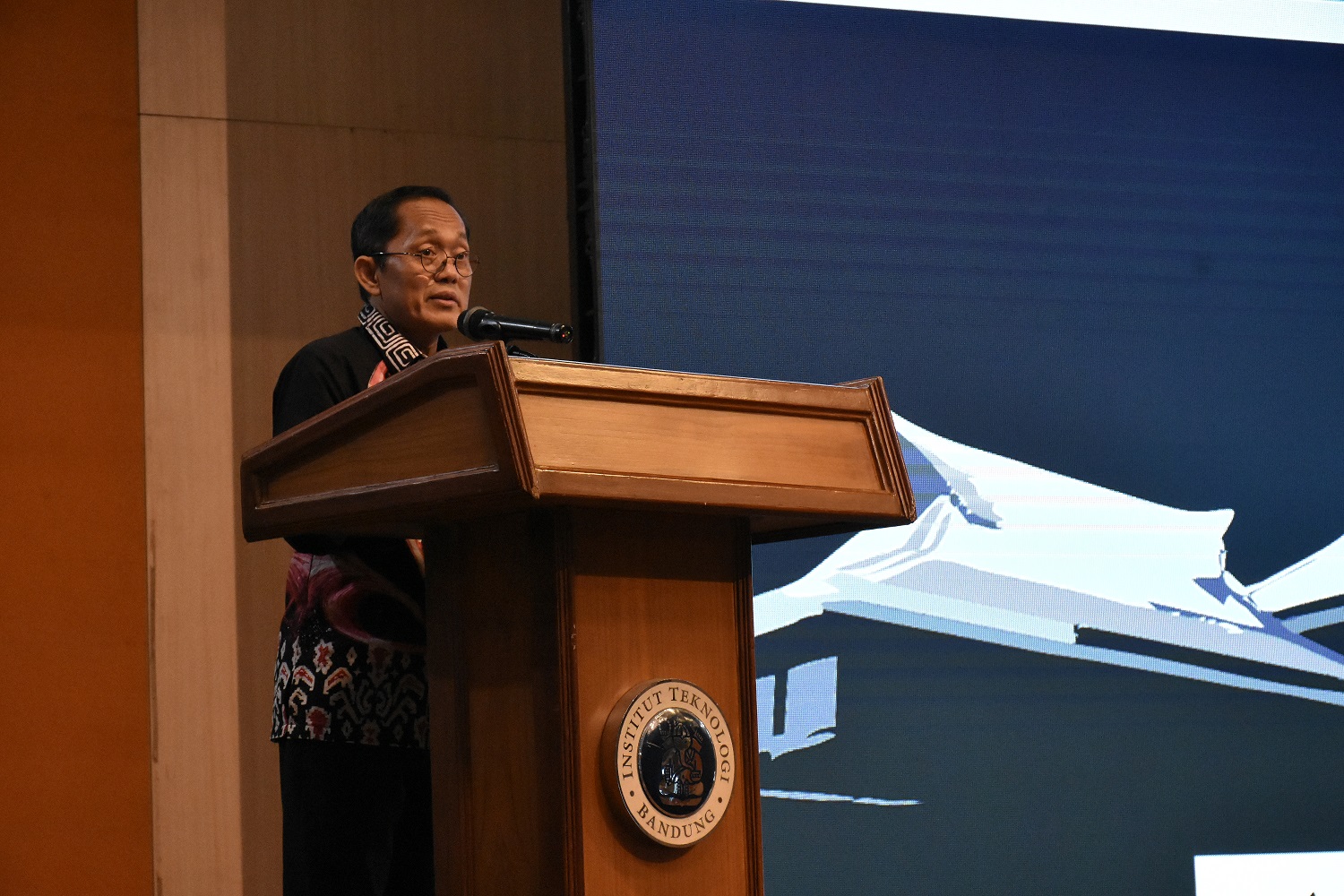Studium Generale ITB: Watersheds as the Basis for Sustainable Regional Resilience
By Anggun Nindita
Editor Anggun Nindita
BANDUNG, itb.ac.id — Institut Teknologi Bandung once again hosted a Studium Generale lecture at the West Hall, ITB Ganesha Campus, on Wednesday (13/3/2024). The event featured Taufan Suranto, a member of the Expert Team of the Citarum River Basin Task Force (PPK DAS Citarum), as the speaker.
The lecture topic was "Watershed Recovery Towards Sustainable Resilience in West Java.
"At the beginning of his presentation, Taufan explained that West Java ranks third as the province with the largest area of critical land in Indonesia. However, when viewed from the proportion of critical land to total land area, it shifts to first place.
The main factor causing land to become critical is the pattern of development that has encroached into protected areas since the 1990s. This trend has also impacted the disaster conditions in the West Java region.The National Disaster Management Agency (BNPB) has recorded West Java's disaster risk index as the highest in Indonesia to date.
"The conversion of forest areas into open areas, especially post-reform, has contributed to the increase in critical land in West Java," he revealed.
In response to this, the government provided a new framework for development that was developed according to sustainable resilience. Resilience itself is defined as the ability of a system to return to its initial condition after pressure/disruption.
West Java has actually had a direction for sustainable resilience policy since 2020, known as the Jabar Resilience Culture Province. This policy includes six resilience points: population, science and technology, infrastructure, institutions and policies, ecology, and financing.
The Jabar Resilience Culture Province was developed from local wisdom as a result of the interactions of the West Java community with disaster exposures over thousands of years. This local wisdom has become the principles and guidelines for the community in utilizing the space around them, consisting of regional order (tata wilayah), temporal order (tata wayah), and behavioral order (tata lampah).
Furthermore, these guidelines mean doing the right thing (behavioral order or lampah) at the right place (regional order or wilayah) and the right time (temporal order or wayah). By adhering to these three principles, the risk of disasters caused by human activities can be minimized as much as possible.
"Meaning, local wisdom is actually Tri Tangtu, consisting of these three. Doing the right thing at the right place and the right time, not the other way around," said Taufan.
To support these efforts, Taufan explained that one of them is done through watershed-based regional management. The role of the watershed is important for controlling the exposure of hydrometeorological disasters to community activities in its surroundings.
A well-managed watershed will be able to protect its coverage area from hydrometeorological disasters, and vice versa. The closest example is the annual flooding in the Bandung Basin due to suboptimal management of the Upper Citarum Watershed.
Various efforts have been made for decades, but have not yet shown significant results.
"If the watershed is good, when it rains, the water will not cause flooding because there are forests to absorb it. Likewise, in the dry season, it will not become arid because there is retention. But now, the water balance is off," he added.
Therefore, according to Taufan, watershed management must start from the smallest unit in the hydrological system, the micro watershed. This approach is an old method that has never been fully implemented.
Management starting from the micro watershed is predicted to have a significant impact on the management of the entire watershed if carried out simultaneously and integrated. This has been proven by many countries in Latin America, India, and New Zealand.
Recovery of the watershed from the micro watershed is done through water conservation to improve the water balance in the micro watershed itself. Some efforts that can be done include tree planting, terraced paddy fields, and protected area conservation. Efforts to balance the water in the watershed take decades, but the success promises various benefits for human activities.
In addition, this step also requires participation and collaboration of multiple actors as in the pentahelix model, which involves the community, government, academia, private sector, and media.
"This is the real challenge, how folks at the campus, especially ITB, can develop this concept. So we can have an early warning system, and have a better water balance scheme in the future," said Taufan at the end of the session.
Reporter: Hanifa Juliana (Regional and Urban Planning, 2020)
Translator: Anggi Nurdiani (Management, 2024)
Editor: Hanifa Juliana (Regional and Urban Planning, 2020)

.jpg)

.jpg)
.jpg)
.jpg)
